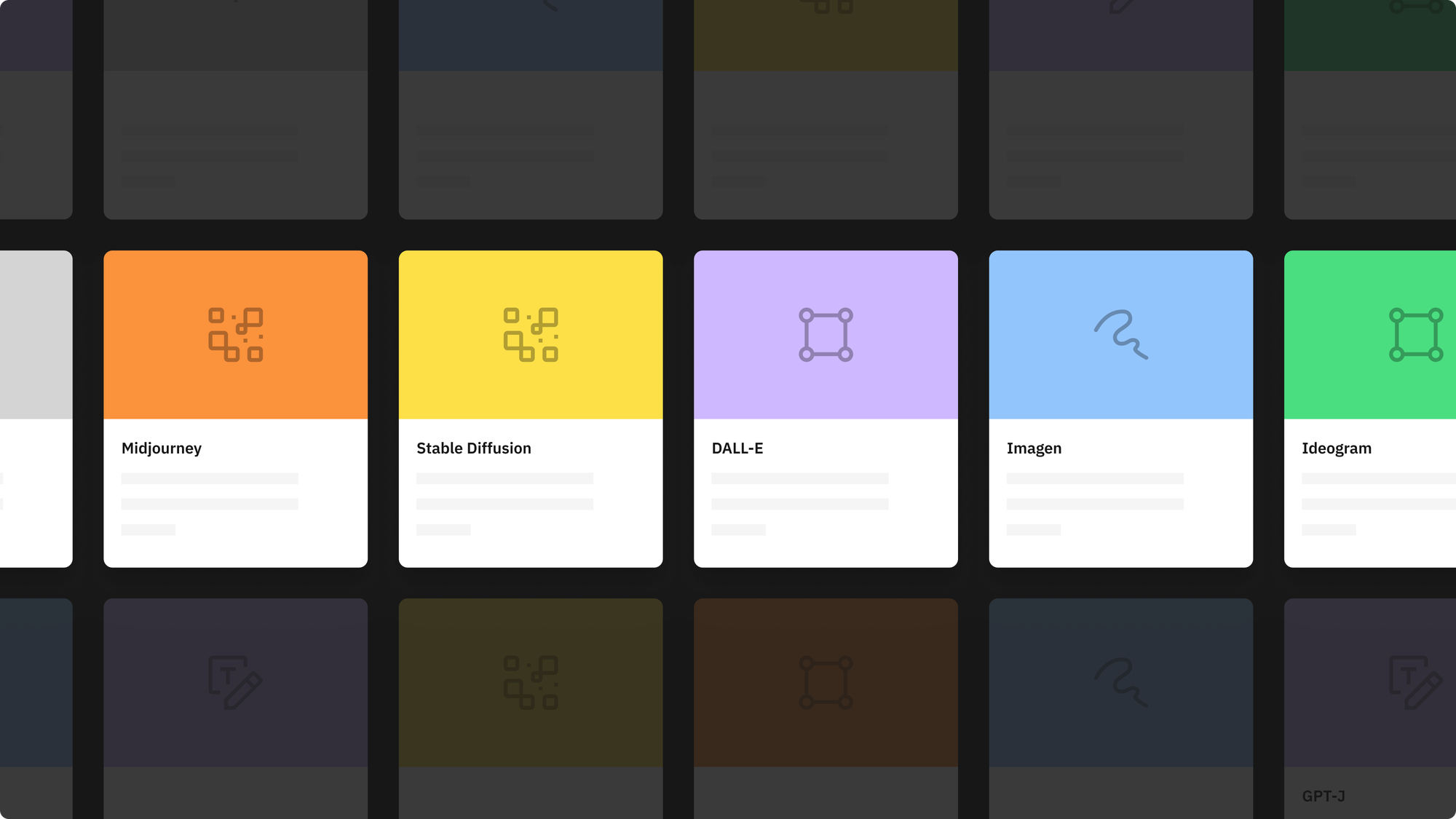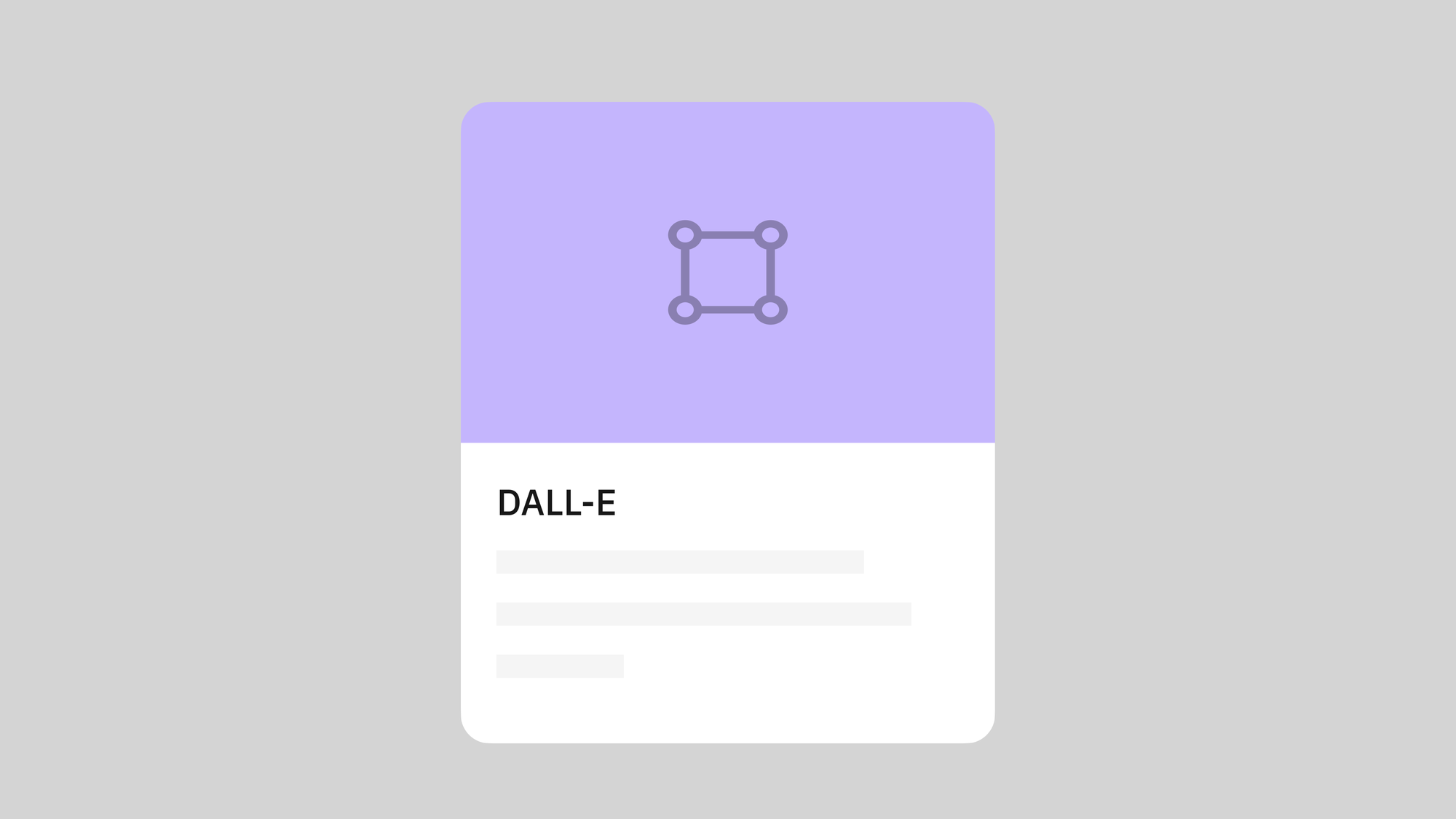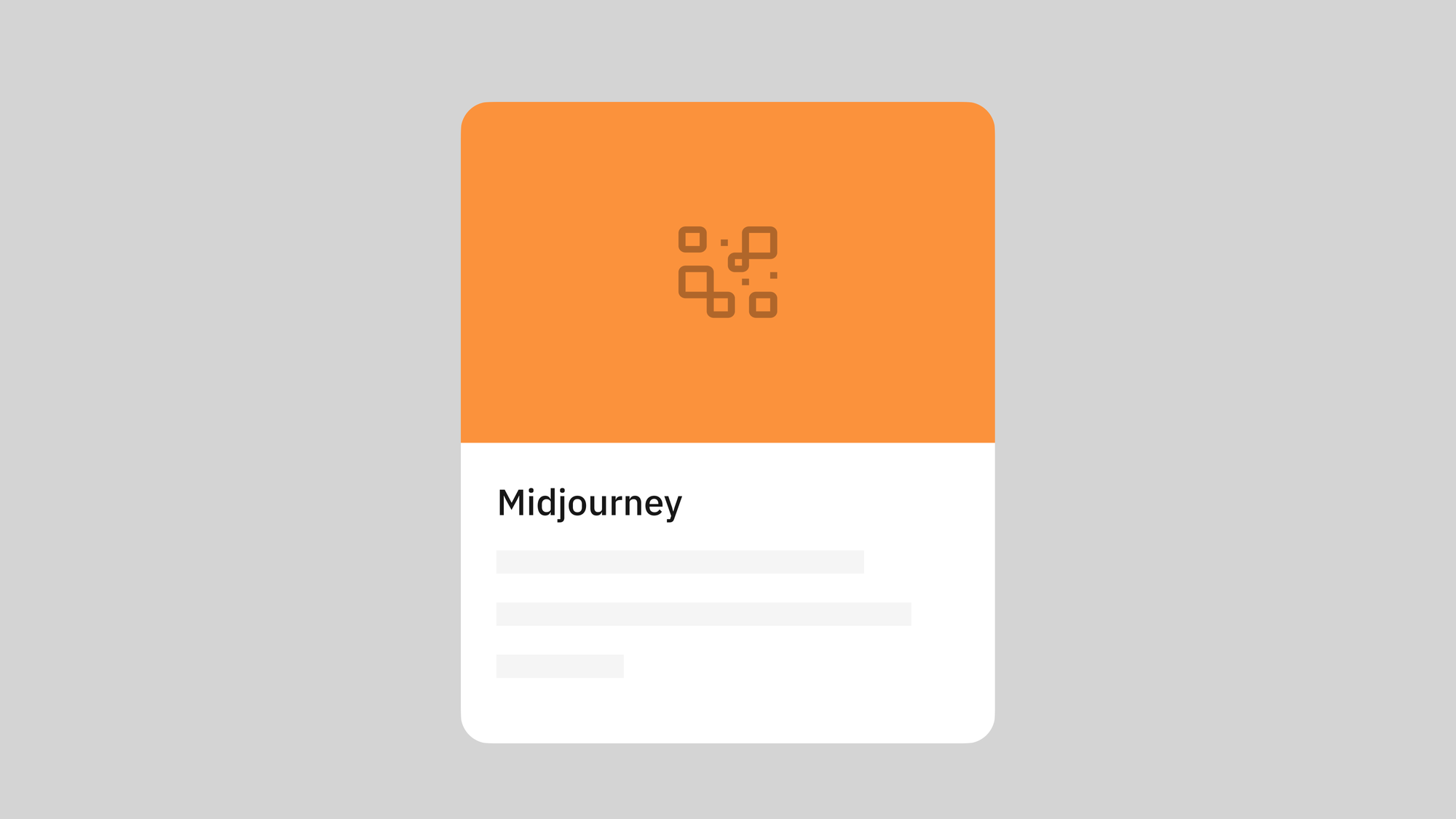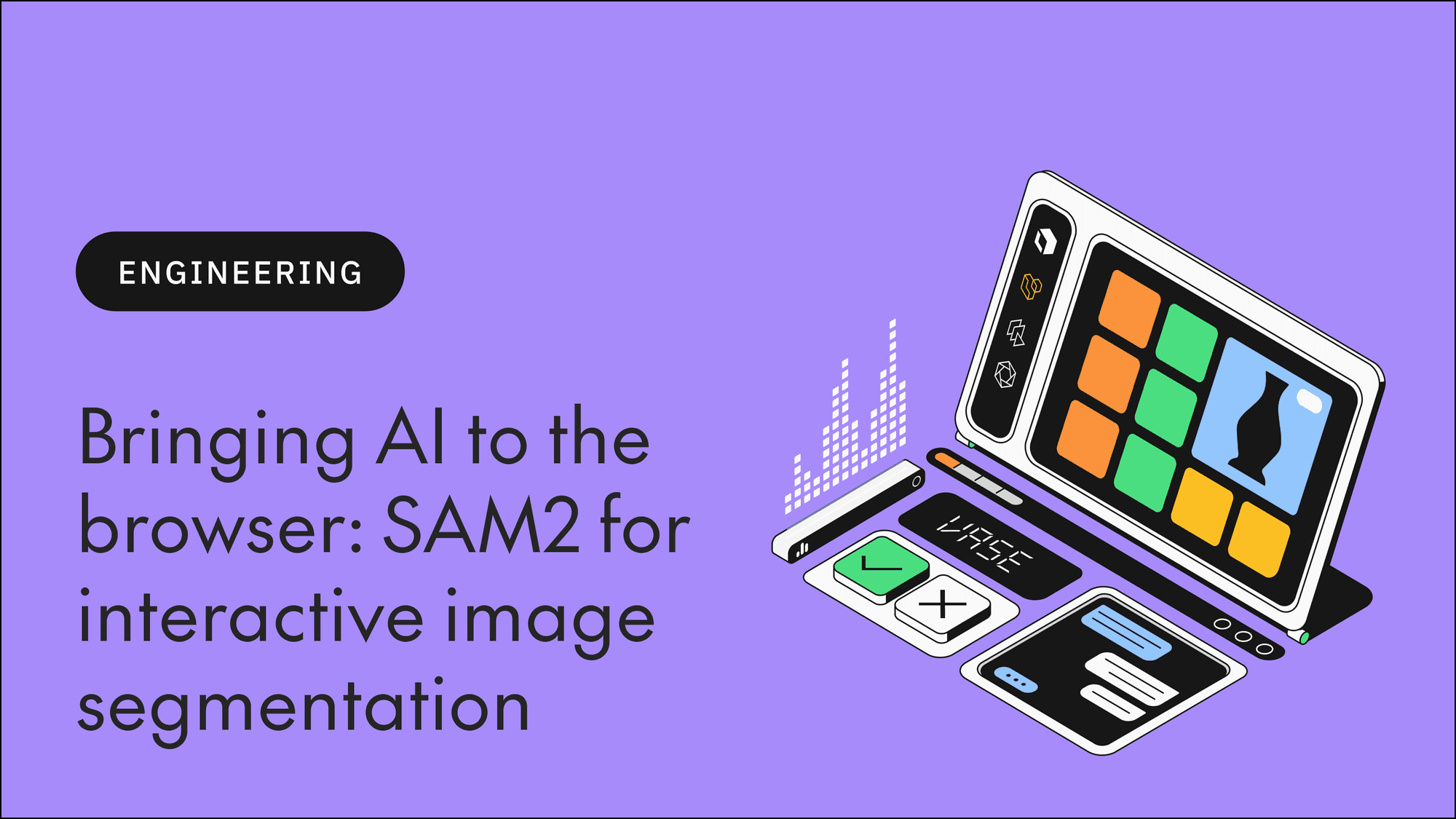Labelbox•August 24, 2023
6 cutting-edge foundation models for computer vision and how to use them

Just a few years ago, building and deploying a successful AI application involved extensive engineering. Teams often encountered bottlenecks in their AI development pipelines, primarily due to the overhead of data engineering tasks such as workflow design, data curation, and labeling.
With the advent of powerful, off-the-shelf foundation models, AI builders entered a new era of work. Rather than developing custom models from scratch, we can now fine-tune powerful, off-the-shelf models for a specific task or business requirement. Builders of computer vision applications now have a plethora of foundation models to choose from, each with different strengths and uses. Finding the right model to start with can accelerate AI development, while making a suboptimal choice can result in lower performance and create delays.
Benchmarks play a critical role in evaluating the performance and capabilities of foundation models, offering a standardized approach to measure how well a model performs tasks like adhering to prompts, demonstrating creativity, and overall quality of the generated image.
While benchmarks provide a standardized method for evaluating a model's performance, Labelbox Leaderboards take this a step further by integrating expert human evaluations, offering deeper insights into a model’s real-world capabilities. By combining these expert assessments with our advanced data platform and science-backed processes, Labelbox goes beyond traditional benchmarking, providing a more comprehensive evaluation for image models. For most of the models described below, Labelbox has conducted its own in-depth performance evaluations, which you can explore further here.
In this post, we'll explore six of the most powerful text-to-image foundation models available to AI builders and the use cases and applications they are best suited for. With Labelbox’s data factory, you can seamlessly explore, fine-tune, evaluate, and experiment with the computer vision models to drive faster and more efficient model development.
Stable Diffusion
Released by Stability AI, Stable Diffusion is a powerful text-to-image model that utilizes latent text-to-image diffusion. This technique involves starting with a noisy image and gradually refining it, guided by a text prompt, to produce highly detailed and realistic images.
Stable Diffusion, released with a commitment to open-source principles, aims to democratize AI, driving innovation and collaborative development of new applications. This approach has led to a significant leap in generative AI, pushing the boundaries of image creation and often producing results that are indistinguishable from human-made artwork.
Key capabilities of this model include:
- Text-to-image generation: Create images from detailed text descriptions.
- Image-to-image editing: Modify existing images based on text prompts.
- Style transfer: Apply unique artistic styles to images.
- Image inpainting and outpainting: Fill in missing sections or extend images beyond their original boundaries.
Although Stable Diffusion is an advanced vision foundation model, it has been noted to struggle generating images involving complex scenes or for this model in particular, human limbs. Other limitations include biases stemming from the skewed representation of Western cultures and language barriers, which have also been highlighted by users.
All in all, Stable Diffusion has been recognized in the AI space as a powerful tool that has the potential to revolutionize the way we create and interact with visual content.
Sample use case:
An e-commerce company can use Stable Diffusion to rapidly generate realistic product images, reducing the need for costly professional photography. By providing detailed text prompts, they can create images of products in various settings, colors, and styles, helping customers visualize the product in different scenarios.
Imagen
Imagen, Google DeepMind’s text-to-image diffusion model, is recognized for its advanced photorealism and deep level of language understanding. Integrated into Google’s Search Generative Experience, Imagen powers image generation through natural language chat, allowing users to interact with the model in a more intuitive and seamless way.
Imagen's research team also introduced DrawBench, a new benchmark to evaluate text-to-image models more thoroughly. In side-by-side comparisons with other models, results showed that human raters preferred Imagen for both sample quality and image-text alignment. Imagen distinguishes itself by its text-first image generation process. It first converts the text into vector embeddings, which are then passed to the image generator. To achieve photorealism, Imagen overcomes the limitation of small image outputs by running both the image and text encoding through a second generator, trained to produce high-resolution images.
While Imagen is a powerful tool, people have noted its limited accessibility making it not as prominent in public discourse. It also has limited capabilities with modalities beyond text and image, such as video and audio, compared to other competitors in the space.
Overall, Imagen is notable for its ability to generate highly detailed imagery while understanding complex prompts, delivering consistently realistic results that set it apart from other generators.
Sample use case:
Game developers can leverage Imagen to significantly accelerate the concept art phase. By providing detailed text prompts, they can rapidly generate a diverse range of character designs, environment concepts, and item visualizations, saving time and inspiring creativity. Additionally, Imagen can be used to create unique textures, materials, and backgrounds, adding depth and realism to game worlds.
DALL-E

OpenAI's DALL-E leverages ChatGPT's language understanding capabilities to generate images based on text descriptions. DALL-E marks a substantial advancement in image generation technology through its ability to create highly precise images directly from textual input and reduce the need for complex prompt engineering.
DALL-E was designed to prioritize precision, transparency, and ethical AI. Due to this, it excels at understanding nuanced text prompts, generating images with remarkable detail. Further, OpenAI's commitment to ethical AI is demonstrated through the development of tools to distinguish AI-generated content as well as their implementation of safeguards to prevent the creation of harmful or offensive images.
Some key capabilities of DALL-E include:
- Prompt Refinement: Leverage GPT to optimize prompts for enhanced precision and detail.
- Quality Control: Adjust image parameters to customize level of detail and organization.
- Image Size Flexibility: Choose from three different image sizes (1024x1024px, 1792x1024px, and 1024x1792px) to suit various aspect ratios and styles.
While DALL-E shines in creating imaginative and diverse outputs, it can fall short in generating highly-realistic visuals. With this in mind, it may not be the best fit for businesses where extreme realism is the primary goal.
Suitable for a wide range of applications, the model’s ease of use and performance makes it valuable in scenarios where you are looking for a more conversational approach to generate images.
Sample use case:
In the entertainment industry, DALL-E can create storyboards, concept art, and pre-visualizations for film and video productions, helping teams explore and align on creative direction. It can also generate digital assets for games, such as character designs and environments, speeding up the development process.
Midjourney

Midjourney is another text-to-image generator that is well known in the space for its ability to create stylized, artistic outputs. Created by a self-funded and private research company, also called Midjourney, the model utilizes an LLM and diffusion techniques to generate new images from text.
Users can generate four images instantly with a single prompt, and also play around with customization features such as the ability to upscale, experiment with different styles, and apply special parameters that align with Midjourney’s commands. These commands include being able to test different style ratios and use negative prompts (e.g., excluding cars from an image).
This flexibility around creative control and sharing and collaborating on Discord allows for a more personalized approach with nuance and accuracy, making it a valuable tool for marketers looking to create visual campaigns and custom assets or creators to design engaging content.
It is important to note that, primarily accessible through a Discord bot, Midjourney's lack of a dedicated application and limited customer support can create accessibility challenges and contribute to a steep learning curve. Additionally, the absence of a free trial, which is offered by some alternatives, makes it less suitable for casual users, and the model also lacks video capabilities.
While these limitations may make Midjourney less accessible for casual users, it shines in its ability to unlock creativity and cater to those seeking a more personalized artistic style. Designed to enhance users' imaginative powers, Midjourney prioritizes customization, allowing users to prompt, tweak, and combine elements for truly unique and creative images.
Sample use case:
UI/UX designers needing to ideate and explore different icon designs or digital workflows can utilize Midjourney to innovate on visual effects, making them more intuitive, unique, and aesthetically pleasing. By using Midjourney to ideate, there can be more efficient prototyping, reduced costs, and overall create more effective icons.
Ideogram
Ideogram is a web application that leverages advanced deep learning techniques to generate and browse images from natural language prompts. Using “generation credits,” within seconds, you can create four images at a given time based on a given prompt.
Ideogram has been recognized to excel at incorporating coherent text into generated images which has previously been difficult for other text-to-image models. Its user-friendly platform caters to all skill levels and offers extensive stylistic control, including options for illustrations, 3D rendering, typography, and cinematic visuals, making it a popular choice among content creators and designers.
Other key features Ideogram offers include:
- Access to user-generated content library: Search through a content library created by others with over 1 billion viewable images.
- Prompt generation tools: Leverage ‘helper’ tools to create creative variations of your original prompt.
- Additional editing features: Easily edit, extend, or combine both your own images and those generated by Ideogram.
One limitation to note is that Ideogram’s generated images tend to lean towards a digital design aesthetic, which may not appeal to those seeking highly detailed or complex compositions.
Overall, Ideogram’s ease of use, accessibility, and high performance with incorporating text into image makes it a valuable tool that can be utilized by a wide range of people.
Sample use case:
Ideogram has the potential to revolutionize the fashion and beauty industry by quickly generating high-quality product visuals, seamlessly integrating text into advertisements and social media content. With just a simple text prompt, designers can quickly iterate on ideas, experiment with different styles, and create visually stunning campaigns that resonate with their target audience.
Flux Pro
Developed by Black Forest Labs, Flux Pro is a text-to-to image model that offers unparalleled performance in prompt adherence, visual quality, and output diversity. Open source and easily accessible through API or partners like Replicate and Fal.ai, Flux Pro utilizes advanced diffusion model and transformer architectures to generate high-quality images from text.
Designed for commercial use, Flux Pro excels in output diversity, enabling users to generate distinct images even from similar prompts. It also offers precise text generation within images and handles nuanced lighting and textures, making it an ideal tool for creating signs, ads, posters, book pages, and more.
It is also known for its impressive image generation speed (~5 seconds per image) and its image-to-image capabilities. With over 12 billion parameters, it has achieved the highest ELO score on the Artificial Analysis benchmark for image generation models.
Flux Pro is a relatively new player in the image generation space compared to other existing models. It currently lacks built-in feature capabilities around upscaling and inpainting, which can be crucial for some commercial applications. Despite this, Flux Pro represents a new approach to AI, emphasizing accessibility, community engagement, and a strong commitment to delivering high-quality outputs.
Sample use case:
In the architecture and construction industry, Flux Pro can be useful in generating detailed, interactive diagrams and simulations of building layouts, construction plans, or renovation designs. With the model’s ability to generate high-quality visuals quickly, architects and project managers can adjust designs in real time, allowing for more efficient client presentations, faster design iteration, and better communication among teams. This can ultimately speed up the decision-making process and reduce project timelines.
Elevate your computer vision capabilities with Labelbox
AI builders are using all six of these foundation models to power a variety of computer vision AI applications today. With Labelbox’s data factory, you’ll be able to explore and experiment with a variety of models, evaluate performance on your data to achieve the highest quality, and leverage the best one for computer vision tasks.
Enjoy these two easy ways to utilize these features for yourself:
- Harness Labelbox’s comprehensive platform and expert network to run a fully functional data factory for advanced computer vision training, across a wide range of data modalities and specialized domains.
- Explore our leaderboards and discover the latest evaluation around image, video, and multimodal reasoning models.
Want to include your computer vision foundation model in the next leaderboard update, or have any questions? Contact us here.
Sources
AWS. (n.d.). What is Stable Diffusion? Amazon Web Services. Retrieved December 15, 2024, from https://aws.amazon.com/what-is/stable-diffusion/#:~:text=Stable%20Diffusion%20is%20a%20generative,to%20create%20videos%20and%20animations.
DeepMind. (n.d.). Imagen: Text-to-Image Generation with Diffusion Models. Google DeepMind. Retrieved December 15, 2024, from https://deepmind.google/technologies/imagen-3/
FluxPro. (n.d.). Flux Pro – AI Image Generation Platform. FluxPro. Retrieved December 15, 2024, from https://www.fluxpro.ai/flux-pro
FluxPro. (n.d.). Flux Pro – AI Image Generation Platform. FluxPro. Retrieved December 15, 2024, from https://www.fluxpro.ai/?utm_source=google_ad&utm_medium=cpc&utm_campaign=common_keywords_flux_11_pro&gad_source=1&gclid=Cj0KCQiAvP-6BhDyARIsAJ3uv7ZdcLj1e5dHAPp_KFyBVdcnoS9YjauSAsjSeBEBmp1DVx58GrhaWgkaAgJeEALw_wcB
Google. (2023, October 5). DALL·E 3: A Revolution in AI Image Generation. OpenAI. Retrieved December 15, 2024, from https://openai.com/index/dall-e-3/
Google. (2023, October 5). What is New with DALL·E 3? OpenAI Cookbook. Retrieved December 15, 2024, from https://cookbook.openai.com/articles/what_is_new_with_dalle_3
Google. (n.d.). Imagen: Text-to-Image Generation. Google Research. Retrieved December 15, 2024, from https://imagen.research.google/
Ideogram. (n.d.). Generating Images with Ideogram. Ideogram Docs. Retrieved December 15, 2024, from https://docs.ideogram.ai/using-ideogram/getting-started/generating-images
Ideogram. (n.d.). Aspect Ratios and Resolutions in Ideogram. Ideogram Docs. Retrieved December 15, 2024, from https://docs.ideogram.ai/using-ideogram/ideogram-features/aspect-ratios-and-resolutions
Midjourney. (n.d.). Midjourney Stylize Command. Midjourney Docs. Retrieved December 15, 2024, from https://docs.midjourney.com/docs/stylize-1
Midjourney. (n.d.). Midjourney Command List. Midjourney Docs. Retrieved December 15, 2024, from https://docs.midjourney.com/docs/command-list
Stability AI. (n.d.). Stable Diffusion: Generative AI Image Models. Stability AI. Retrieved December 15, 2024, from https://stability.ai/stable-image
Stability AI. (n.d.). Stable Video: Generative AI for Video Creation. Stability AI. Retrieved December 15, 2024, from https://stability.ai/stable-video

 All blog posts
All blog posts

